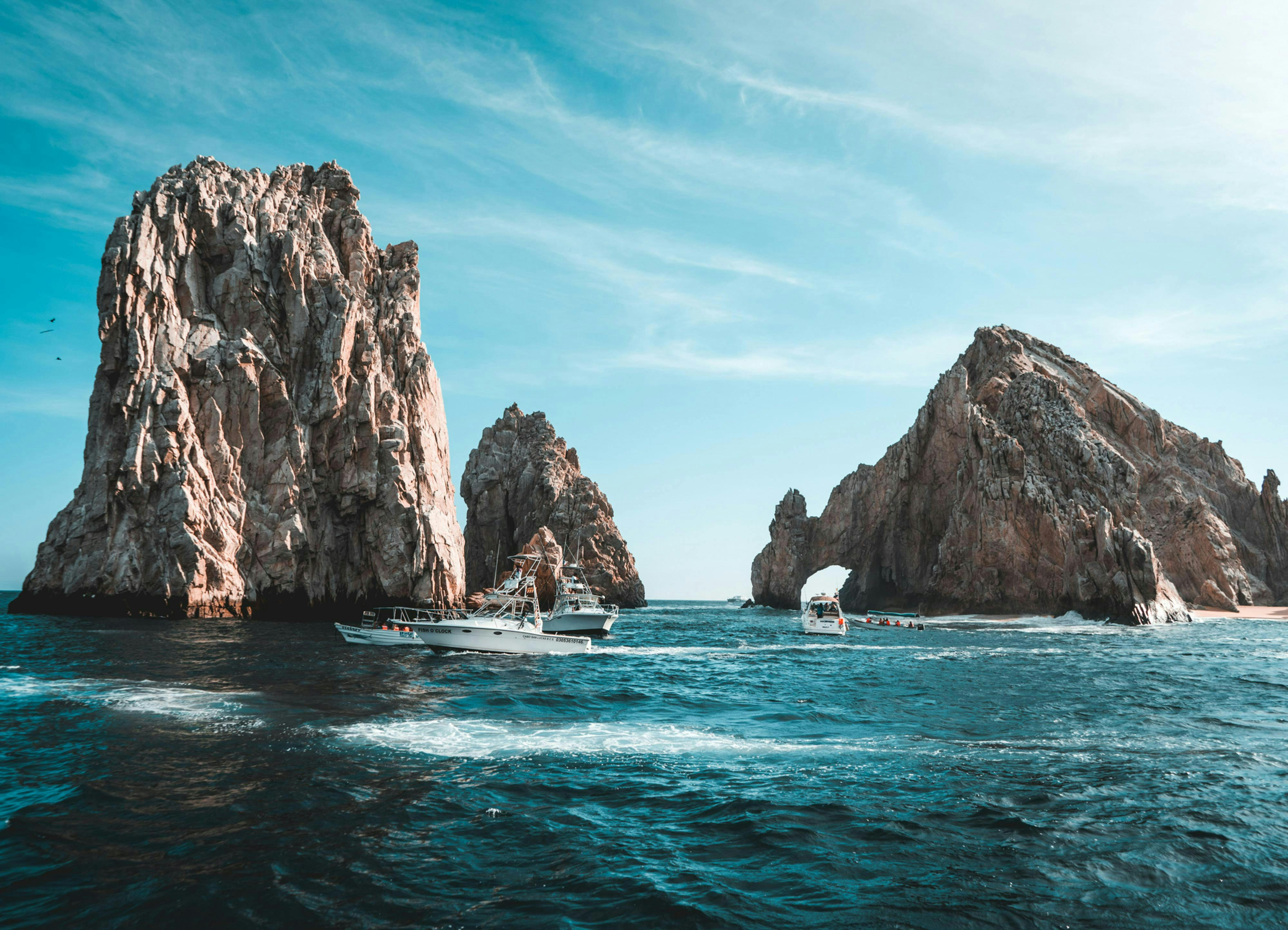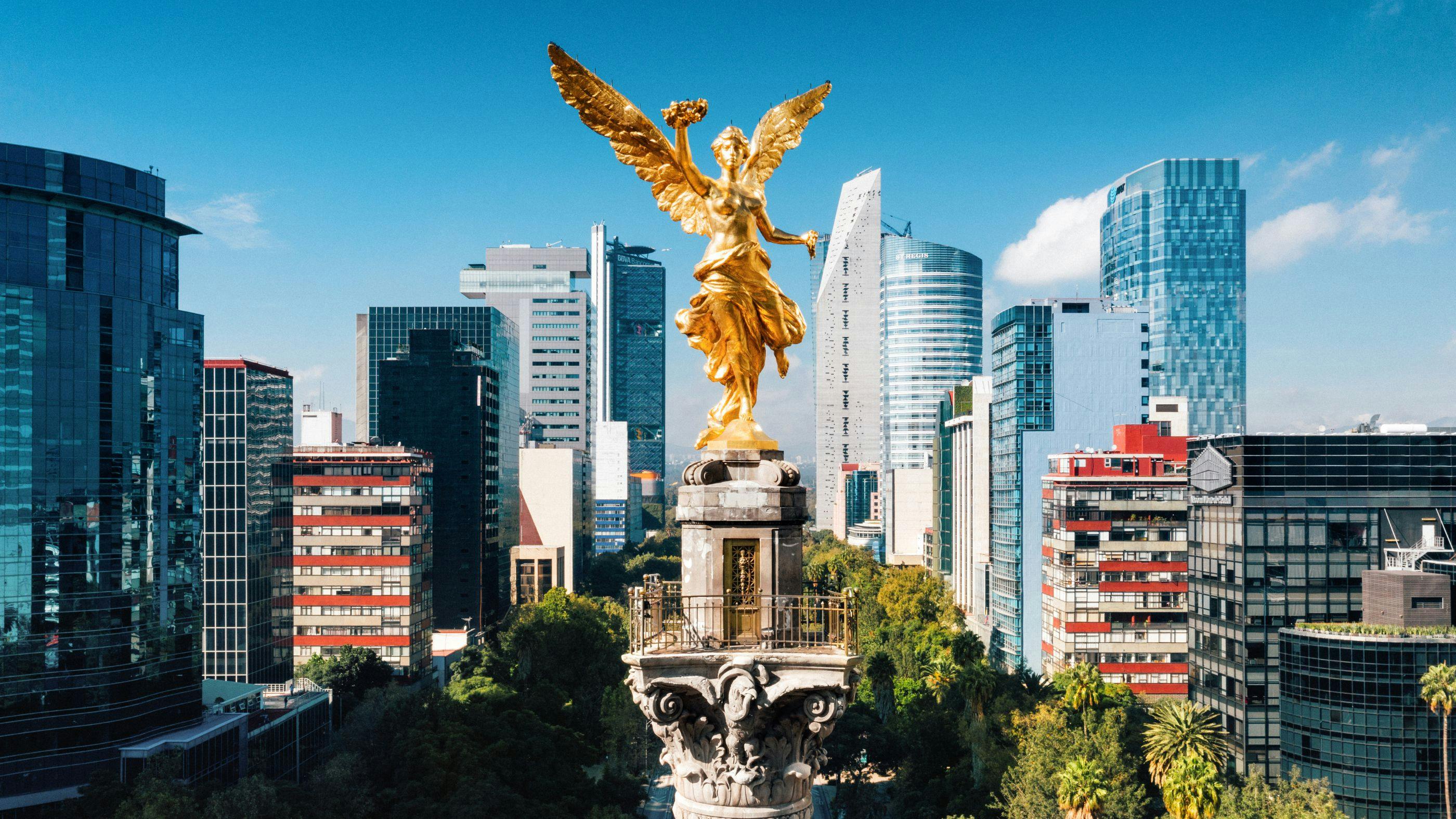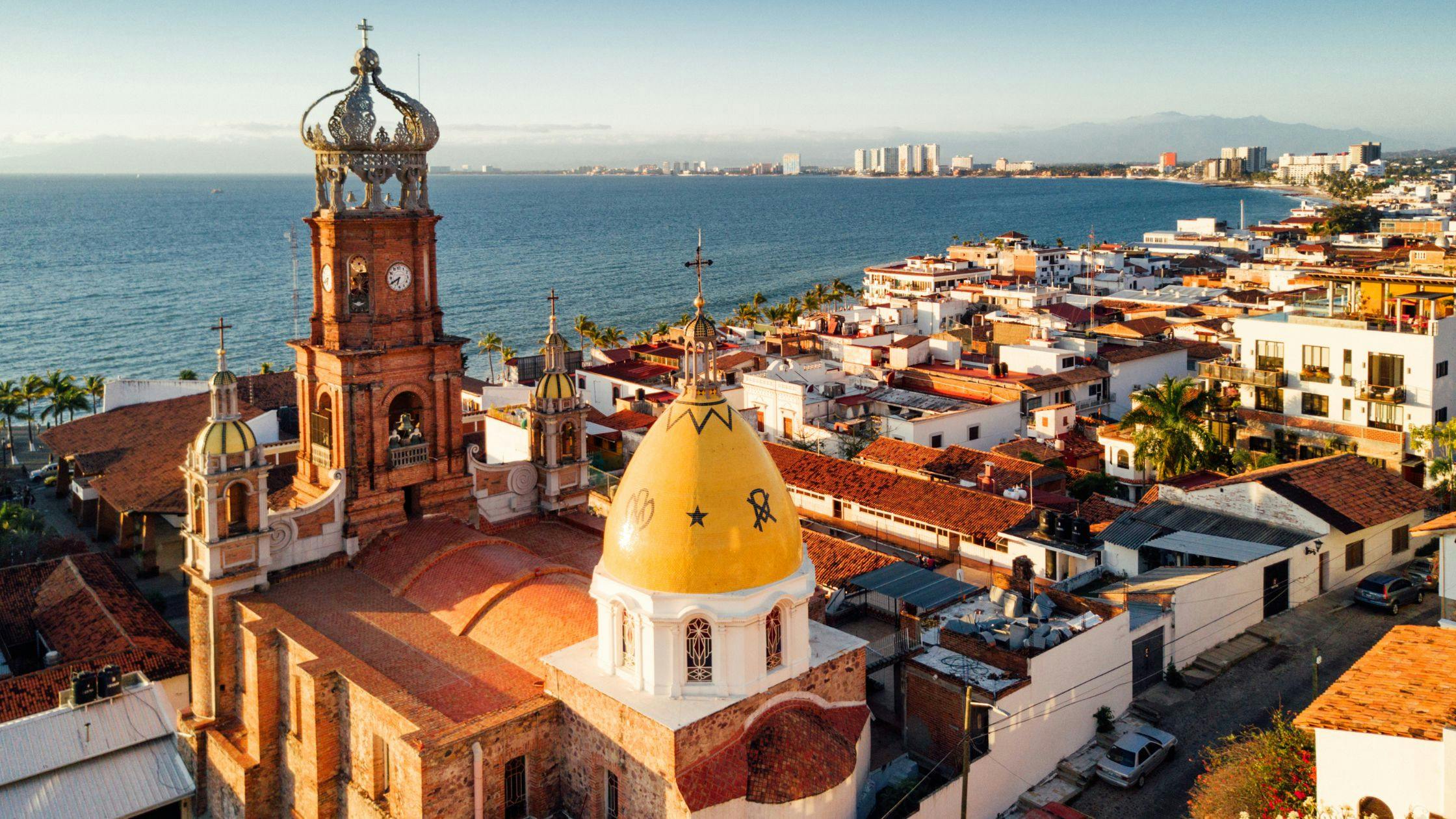Best Time to Visit Mexico

With its sun-soaked beaches, ancient ruins, vibrant cities, and lush jungles, Mexico is a country that truly has it all. From the snow-capped volcanoes of the central highlands to the turquoise waters of the Caribbean coast, its diverse geography sets the stage for a wide range of experiences. Whether you’re exploring the cobblestone streets of San Miguel de Allende, diving into a cenote in the Yucatán, or surfing the waves in Oaxaca, timing your visit can make all the difference.
Mexico’s seasons aren’t just about weather, they influence everything from crowd sizes and costs to cultural festivals and wildlife encounters. With distinct climate zones and a calendar packed with lively celebrations, knowing when to go can help you tailor your trip for relaxation, adventure, or cultural discovery. Let us break down the best time to visit Mexico by season, month, and region so you can make the most of your journey, no matter your travel style.
Enjoy sun-kissed shores and vibrant traditions with the Magical Mexico Beaches & Culture package.
Understanding Mexico’s Climate
Spanning tropical coastlines, mountainous highlands, arid deserts, and lush rainforests, Mexico’s geography gives rise to a variety of climate zones. Whether you’re relaxing in the warm sands of the Riviera Maya or hiking through the cool pine forests near Mexico City, the weather can vary dramatically depending on where and when you go.
General Climate Zones in Mexico
Tropical Coasts (Yucatán Peninsula, Pacific Coast): Warm and humid year-round, with more rain in summer and fall. Highlands & Central Plateau (Mexico City, Guadalajara, San Cristóbal de las Casas): Milder temperatures due to elevation, with warm days and cool nights. Northern Mexico (Baja California, Chihuahua): Dry desert conditions with hot summers and chilly winters.
Each region experiences its own seasonal rhythm, so it’s essential to match your travel goals with the right weather window. Here’s how the seasons typically play out across the country:
Dry Season (November to April)
Best For: Beach vacations, cultural festivals, sightseeing, and outdoor activities
During these months, the weather is pleasantly warm with minimal rainfal, especially in coastal and southern areas. This is peak travel season across much of Mexico, especially December through March. Think sun-drenched days on the beaches of Cancún, whale watching in Baja California, or strolling through Oaxaca’s historic streets.
Highlights:
- Ideal time for visiting Riviera Maya, Mexico City, Oaxaca, and Baja
- Major events like Día de los Muertos (late Oct–early Nov) and Semana Santa (March/April)
- Comfortable temps in the highlands; perfect for city exploration
Rainy Season (May to October)
Best For: Lush scenery, fewer tourists, and budget-friendly travel
Expect afternoon or evening showers, especially in tropical and mountainous regions. While the humidity rises, so does the natural beauty—green jungles, vibrant flowers, and flowing waterfalls await. It’s also a quieter time to travel, which means lower prices and smaller crowds at major attractions.
Highlights:
- Rain is usually short and intense, often followed by sun
- Excellent for eco-travel, especially in Chiapas and the Yucatán
- Good time for cenote swimming and wildlife viewing (monarch butterflies, sea turtles)
Hurricane Season (June to November)
Best For: Experienced or flexible travelers seeking deals
Coastal regions along the Gulf of Mexico, Caribbean, and Pacific are most affected during this season. While not every area sees hurricanes, tropical storms are more common, particularly between August and October. Travelers visiting during this time should stay updated on weather forecasts and consider travel insurance.
Highlights:
- Best prices on flights and hotels, especially in Cancún and Puerto Vallarta
- Many sunny days are still possible, but the weather can be unpredictable
- Watch out for travel disruptions and pack accordingly
If you’re planning a holiday from India, check out the complete breakdown of the Mexico trip cost from India to budget your vacation better.
Month-by-Month Guide to Visiting Mexico
Regional Highlights: Best Time to Visit Key Areas in Mexico
Mexico's diverse geography means that weather and experiences can vary greatly from region to region. Here's when to go based on where you're headed:
Tip: Align your itinerary with local weather patterns to make the most of your adventure.
Mexico City & Central Highlands
Best Time: March to May
- Pleasant spring temperatures and blooming jacaranda trees
- Major cultural events like Semana Santa and local festivals
- Great for exploring museums, historic neighborhoods, and nearby pyramids (Teotihuacán)
Perfect for: History buffs, art lovers, and culture-seekers.
Yucatán Peninsula (Cancún, Tulum, Mérida)
Best Time: November to March
- Dry, sunny weather for beach vacations and snorkeling
- Lower humidity and calmer Caribbean waters
- Ideal for exploring Chichén Itzá, cenotes, and Mayan heritage
Perfect for: Beach lovers, honeymooners, and heritage travelers.
Pacific Coast (Puerto Vallarta, Oaxaca, Zihuatanejo)
Best Time: November to April
- Consistently sunny skies and warm ocean temperatures
- Surf season peaks in winter; turtle hatching season in select months
- Colorful celebrations like Guelaguetza and local beach festivals
Perfect for: Surf enthusiasts, foodies, and cultural explorers.
Baja California (Cabo San Lucas, La Paz)
Best Time: Mid-October to June
- Whale watching from December to April
- Cool, dry air is ideal for hiking, diving, and desert exploration
- Great time for wine tasting in Valle de Guadalupe
Perfect for: Marine life lovers, adventure travelers, and road trippers.
Add excitement to your vacation with handpicked Mexico activities and experiences
Cultural Festivals and Events in Mexico
Mexico’s cultural calendar is packed with vibrant festivals that reflect its deep-rooted traditions, indigenous heritage, colonial influence, and celebratory spirit. Planning your trip around these events offers a front-row seat to some of the most spirited and authentic experiences the country has to offer.
Carnaval (February/March)
Carnaval is Mexico’s answer to Mardi Gras, celebrated with dazzling parades, flamboyant costumes, music, and nonstop dancing. While the festival is observed nationwide, the most extravagant celebrations take place in coastal cities like Veracruz, Mazatlán, and Cozumel.
- Mazatlán hosts one of the largest Carnavals in the world, complete with float parades along the malecón (boardwalk), cultural performances, and fireworks.
- Veracruz’s celebration is deeply rooted in Afro-Caribbean traditions, with rhythmic dances and lively comparsas (dance troupes).
- Events typically start the weekend before Ash Wednesday and continue for several days, culminating in the symbolic “burial of bad humor” to usher in Lent.
Best for: Culture lovers, music and dance enthusiasts, photographers.
Semana Santa (March/April)
Semana Santa, or Holy Week, is one of the most important religious observances in Mexico. Spanning Palm Sunday to Easter Sunday, it is marked by solemn processions, dramatic reenactments, and vibrant traditions.
- In towns like Taxco and San Miguel de Allende, penitents dress in traditional robes and hoods, walking barefoot through cobblestone streets.
- In Iztapalapa (Mexico City), a massive live Passion Play reenacts the crucifixion of Christ with thousands of participants and spectators.
- Beach towns like Acapulco and Cancún see an influx of domestic tourists on vacation during this time.
Best for: Religious and cultural immersion, traditional ceremonies, spiritual reflection.
Independence Day (September 16)
Known as El Grito de Dolores, Mexico’s Independence Day marks the beginning of the 1810 uprising against Spanish colonial rule. Celebrations begin the evening of September 15 with patriotic fervor and reach a climax at midnight.
- The President of Mexico reenacts “El Grito” from the balcony of the National Palace in Mexico City, echoed by mayors across the country in local plazas.
- Expect streets draped in red, white, and green, with fireworks, mariachi music, folk dancing, and traditional dishes like chiles en nogada.
- It's not just a day—celebrations often span the whole week with parades, concerts, and civic ceremonies.
Best for: History buffs, foodies, families, and anyone wanting to feel national pride.
Day of the Dead (November 1–2)
Perhaps Mexico’s most iconic cultural festival, Día de los Muertos honors deceased loved ones with joy rather than mourning. It's a colorful, symbolic event blending indigenous beliefs with Catholic traditions.
- Altars (ofrendas) are set up in homes and cemeteries with candles, marigolds, photos, favorite foods, and sugar skulls to guide spirits back.
- In Oaxaca and Mexico City, elaborate parades, face-painting, and traditional costumes fill the streets.
- In Pátzcuaro (Michoacán), candlelit vigils by the lake create a magical, otherworldly atmosphere as locals gather to honor their ancestors.
Best for: Cultural photographers, spiritual travelers, and lovers of folklore and symbolism.
Las Posadas (December 16–24)
Las Posadas reenacts Mary and Joseph’s search for shelter before the birth of Jesus. Over nine nights, communities hold nightly processions and gatherings that blend religious reverence with festive celebration.
- Children carry candles and sing carols, stopping at homes to ask for “posada” (shelter), until they’re welcomed in for food and merrymaking.
- Piñatas, tamales, ponche (a hot fruit punch), and nativity scenes are central to the festivities.
- The final Posada leads into Nochebuena (Christmas Eve), often culminating in midnight mass and family feasts.
Best for: Families, holiday travelers, those seeking local Christmas traditions.
Experience culture, history, and natural beauty with our exclusive Mystical Mexico Escape package
Travel Tips for Visiting Mexico
When traveling to Mexico, planning ahead and preparing well can significantly enhance your experience. With its diverse climate, bustling cities, and vibrant festivals, there are a few things to keep in mind to make your trip as smooth and enjoyable as possible.
Booking Advice: Plan Ahead for Major Festivals and Peak Seasons
Mexico’s most popular tourist spots, like Cancún, Mexico City, and Oaxaca, can get packed during major holidays and festivals, especially during spring break (March), Semana Santa (Easter), and Día de los Muertos (November). Here’s how to plan:
- Book Early: For major festivals like Carnaval, Independence Day, or Day of the Dead, hotels and flights fill up quickly. Secure your bookings at least 3–6 months in advance.
- Off-Peak Travel: Consider traveling during the shoulder seasons (April to June or September to early November) when weather is still favorable, but prices are lower, and there are fewer tourists.
- Festival Accommodations: If you plan to visit during a festival, be prepared for higher accommodation rates and book well in advance. Look for lodging outside the central tourist areas to avoid crowds.
Best for: Budget-conscious travelers, those seeking local experiences during peak seasons.
Discover the best places to visit in Mexico, from ancient ruins to stunning beaches.
Packing Essentials: Prepare for Mexico’s Varying Climates
Mexico’s climate varies significantly depending on where you are—beaches, mountains, and deserts all offer different experiences. Be sure to pack with this in mind:
- Sun Protection: Whether you’re at the beach in Cancún or exploring Mexico City’s high-altitude streets, the sun can be intense. Pack sunscreen with high SPF, sunglasses, and a wide-brimmed hat.
- Light and Breathable Clothing: For the tropical coastal regions and hot cities, lightweight, breathable clothing is essential. Long-sleeve shirts and pants can protect against the sun and bugs.
- Layers for Highland Areas: Mexico City and other high-altitude locations (e.g., Guanajuato or San Cristóbal de las Casas) can be chilly, especially in the evenings, so pack a light sweater or jacket.
- Comfortable Walking Shoes: You’ll likely be walking a lot, especially in cities like Oaxaca or Mérida, where cobblestone streets are common. Comfortable shoes are essential for exploring.
Best for: Active travelers, nature enthusiasts, and anyone visiting a variety of regions.
From adventure to culture, explore the top things to do in Mexico that make your trip unforgettable.
Health & Safety: Stay Informed and Be Prepared
While Mexico is a safe and welcoming destination, there are a few health and safety tips to ensure you’re prepared for your trip, especially in certain seasons.
- Weather Preparedness: Mexico’s weather can be unpredictable, particularly during the rainy season (May to October). Bring a lightweight, packable rain jacket and a small umbrella. If traveling during hurricane season (June to November), keep an eye on the weather forecasts and be flexible with your travel plans in coastal areas.
- Health Precautions: To avoid getting sick from food or water, drink bottled water and eat at reputable places. Carry hand sanitizer and wet wipes to maintain hygiene. It’s also a good idea to consult a doctor before traveling to get necessary vaccinations and travel medications, such as anti-malarial pills if visiting areas where malaria is present.
- Travel Insurance: Travel insurance is recommended, particularly if you’re visiting remote areas or participating in adventure activities. Medical emergencies can be costly, and insurance will cover costs related to illness, accidents, or even trip cancellations.
- Safety Tips: Stick to well-known tourist areas and avoid venturing into unfamiliar places after dark. In cities like Mexico City, use reputable taxi services or rideshare apps like Uber, rather than hailing a cab on the street.
Best for: Safety-conscious travelers, adventure seekers, and those unfamiliar with Mexico’s regional variations.
Additional Tips:
- Local Etiquette: Mexicans are known for their warm hospitality, so a few phrases in Spanish can go a long way. "Hola" (hello), "Gracias" (thank you), and "Por favor" (please) are great starters.
- Currency and Payments: While major tourist areas accept credit cards, it’s always good to carry some pesos for smaller purchases, especially in rural areas. ATMs are widely available, but be cautious of fees.
- Electricity: Mexico uses the same voltage as the U.S. (110V) and has Type A and B outlets. Bring a converter if your devices use a different plug type.
When it comes to planning your trip to Mexico, the key to a memorable experience lies in aligning your travel dates with the unique seasonal offerings. Whether you're aiming to indulge in Mexico's vibrant festivals, relax on its beautiful beaches, or explore its natural wonders, Mexico offers something for everyone, no matter the time of year.
Browse our curated Mexico tour packages for a hassle-free and memorable holiday.





